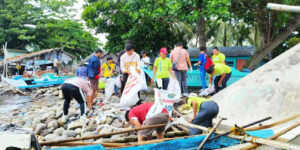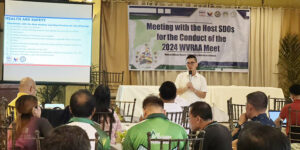
The Philippines was found to be among the world’s most dangerous countries in the world for children, in terms of exposure to multiple types of overlapping climate and environmental shocks and stresses, said the latest UNICEF East Asia and Pacific report, titled “Over the Tipping Point.”
At least 96 percent of children in the Philippines face more than three different types of “overlapping” climate-related hazards or stresses, much higher than the global average of 73 percent and the regional average of 89 percent.
That means a whopping 9 out of 10 Filipino children are at risk of experiencing several types of climate shocks like coastal flooding, water scarcity, heatwaves, air pollution, tropical cyclones, or vector-borne diseases.
With climate shocks increasing in frequency, the effects of these hazards may be more amplified among children who are already vulnerable to begin with due to non-climate shocks like the COVID pandemic and the cost of living crisis, among others.
This leads to what the UNICEF calls a polycrisis, or “a situation with multiple near-simultaneous shocks with strong interdependencies.”
Based on data from several climate and environment related research institutions, the Philippines has an “extremely high” (more than five) number of hazards, shocks, or stresses.
Climate hazards striking the country simultaneously could also be “eroding” people’s capacity to mitigate its effects, the report stated.
It can also lead to “secondary multiplier effects” when they impact those with different vulnerabilities in social, economic, human, and ecological systems that are interconnected. For example, floods increase the risk of water-related infectious diseases due to contamination, and floods and cyclones increase the risk of malaria and dengue due to more mosquito breeding sites.
UNICEF recommendations to better protect children from the effects of overlapping climate stresses include the need to provide continued access to the services they need, which will require investments in “climate-smart and disaster-resilient education, health, water, sanitation and hygiene services.”
It also called on countries to provide robust child protection and social protection systems that are “climate-responsive” and the use of strong early warning, risk management, and disaster preparedness systems.
It would seem that the Philippine government has a lot of work to do if it is going to protect the children in one of the most dangerous countries to be in.*







